Not sure which aircraft you fly but is the equipment capable of being RNP 1 certified? Is it on the D-reg and if so how are they dealing with PRNAV LoAs?
I just received my new LoA from the FAA but it is hard work to get them these days. If Europe ever really starts enforcing it a lot of commercial operators will be grounded.
Not sure which aircraft you fly but is the equipment capable of being RNP 1 certified?
Cessna 550 and 560 and the opinions in this respect differ... Four aircraft of our fleet are now approved, the others are still being evaluated. The two I'm flying are on the waiting list.
If Europe ever really starts enforcing it a lot of commercial operators will be grounded.
Not grounded, but banned from "P-RNAV only" airports/airspaces. Currently only Amsterdam comes to mind. Not one of our frequent destinations luckily.
And here are some screenshots of "vectors to RNAV/GPS approaches" from the last two days:
This is the one I described in my last posting, a vector ("on heading 100 cleared RNAV approach") in the general direction of the FAF ("VATER"). No problem at all if the equipment is operated accordingly.
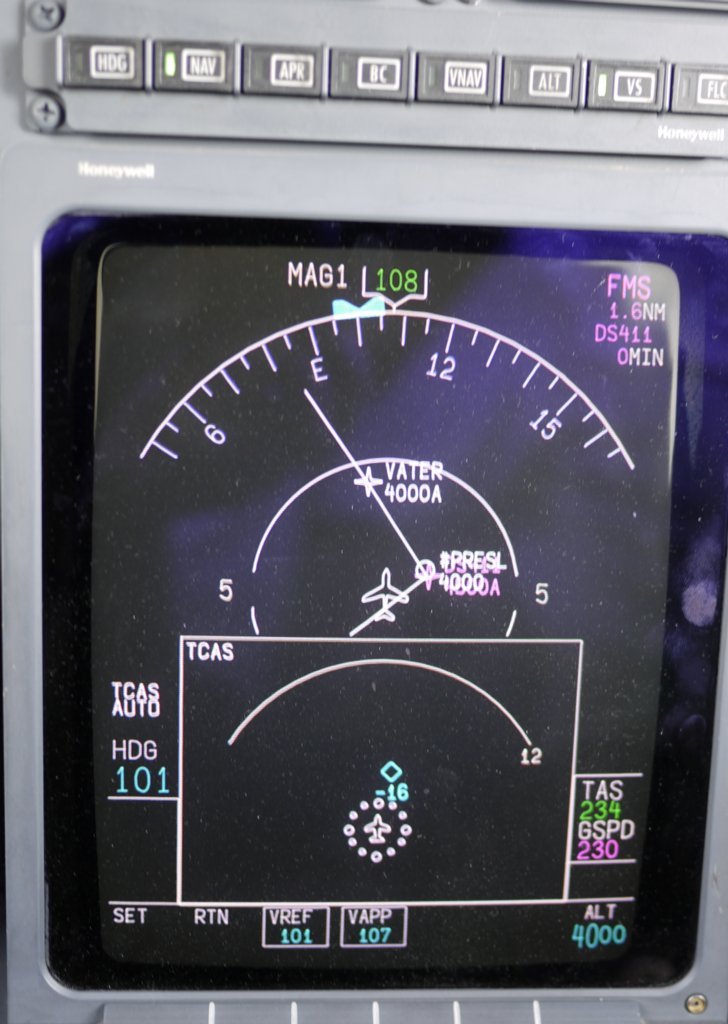
Here's another one from today, intercepting the route segment between the FAF ("WL803") and the preceding waypoint ("LIDSI"). Orginally on a heading of 154 (still displayed in cyan), but the aircraft has already turned onto a computed intercept heading of 124:

Which looks like this on the PFD. The amber "HDGINT" message on the left side of the screen together with the "LNAV" mode annunciator on top show that we are fliying on a computed intercept heading in NAV mode.
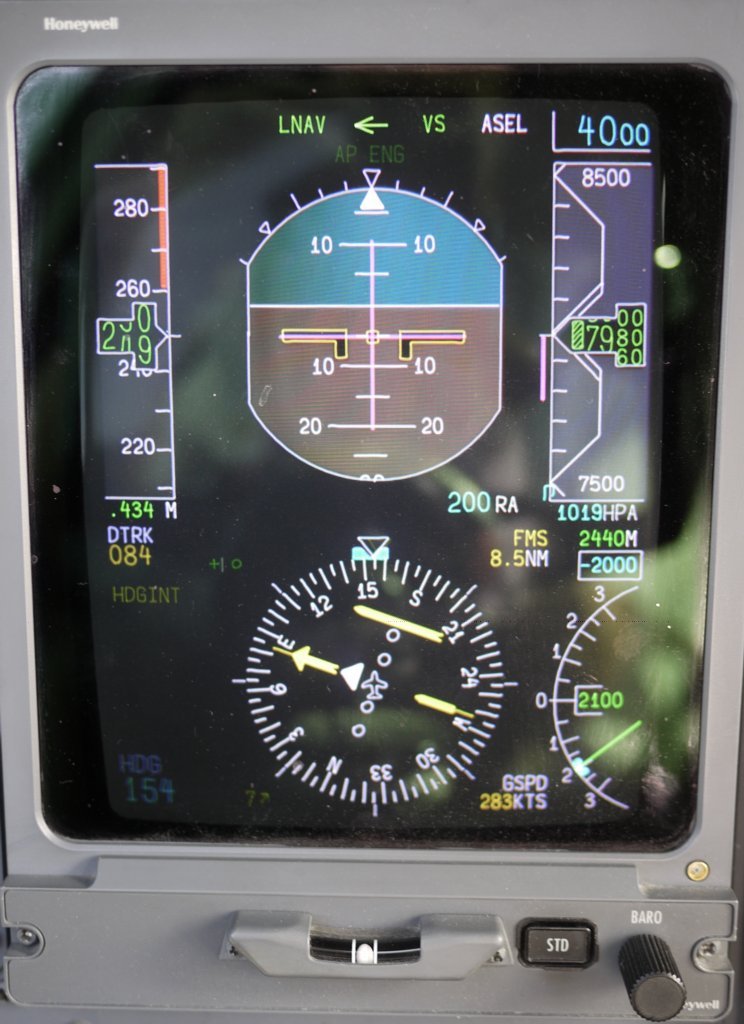
On the FMS it looks like this (still in TERM mode during the intercept):
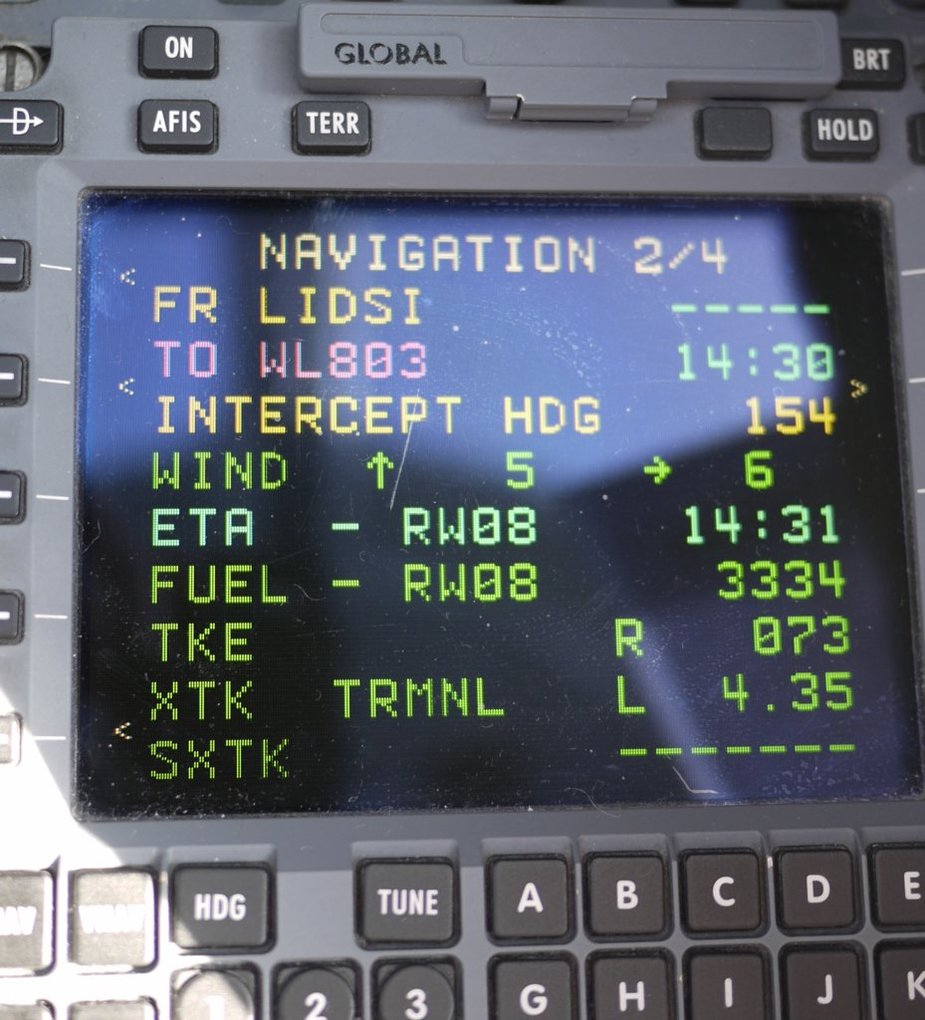
Now it is sufficiently close to the final course and switches to APRCH mode:
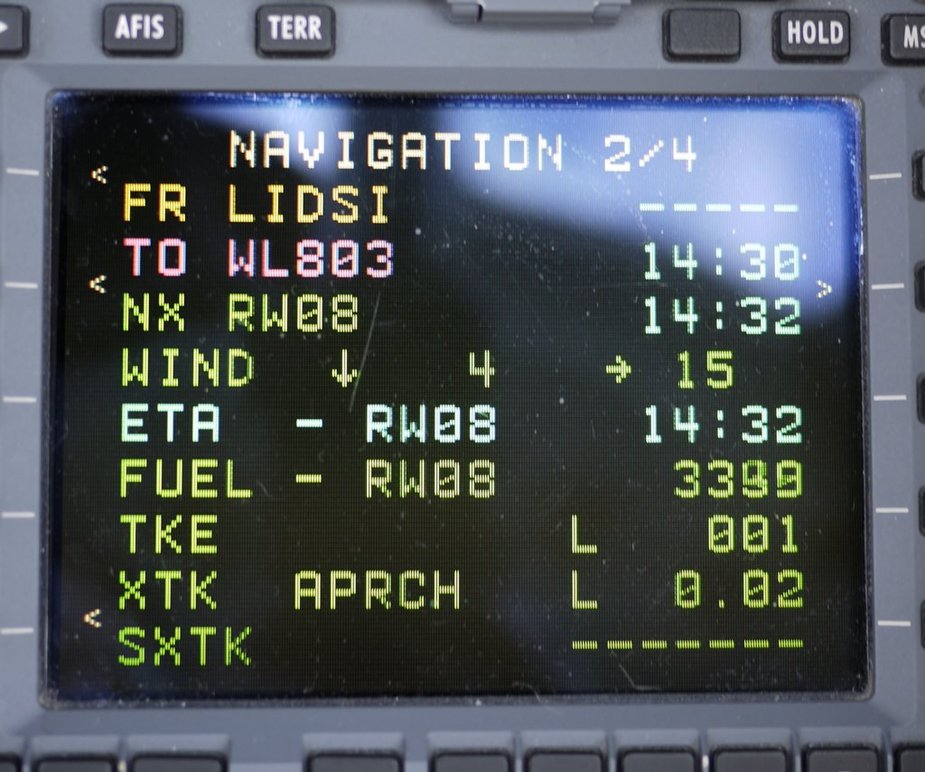
Which on the navigation display looks like this:
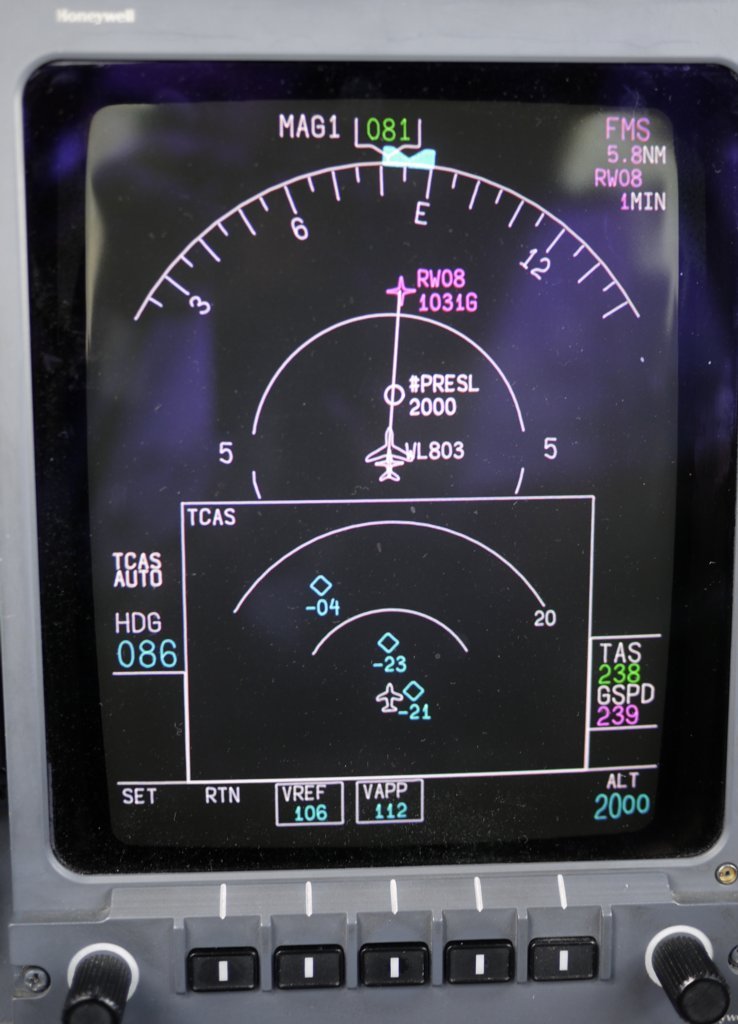
And on the PFD at 5.4 NM to go like that (quite high on the synthetic glideslope and a little on the speedy side because in reality it was a visual approach, otherwise we would fly it fully configured from the FAF onwards at around 130KIAS). The green "APP" indicator on the left side of the screen shows that the CDI was switched to localiser mode.
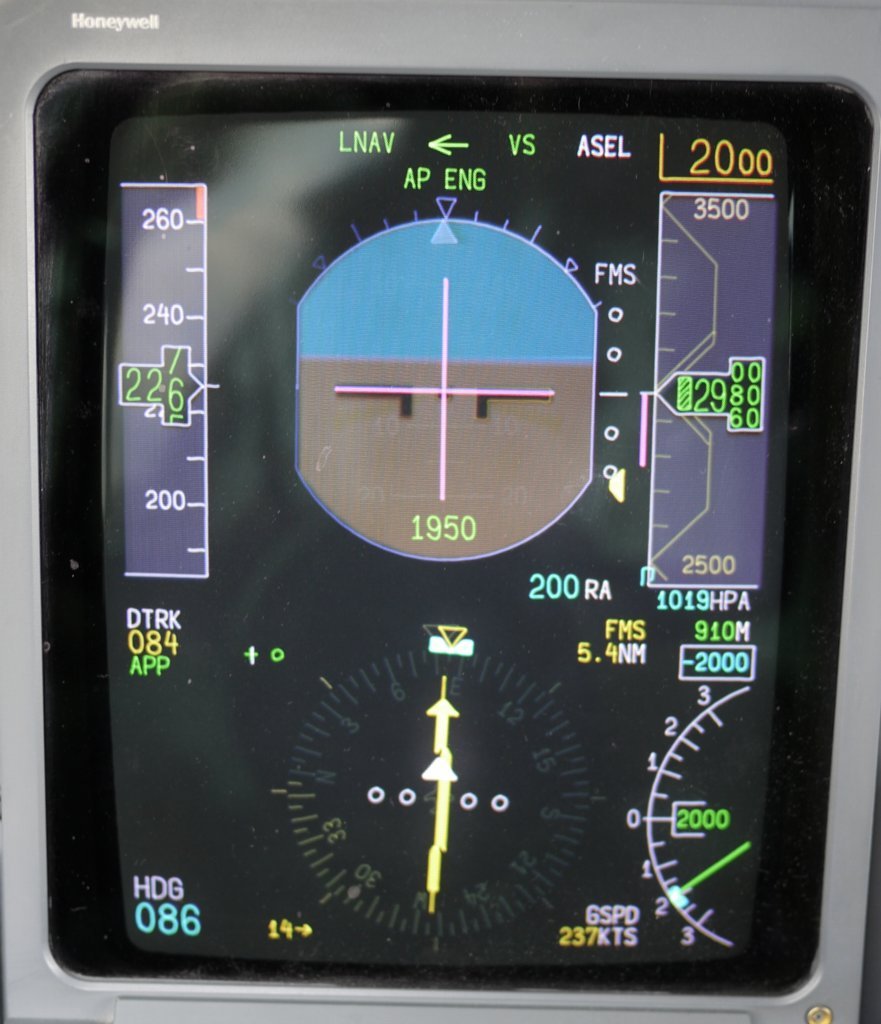
What's really important doing this kind of interecption of an RNAV procedure using our equipment is that the FD/AP must stay in LNAV mode all the time. Intercept headings are entered into the FMS using the "HDG" key and selecting the waypoint and course (usually already correctly pre-set as default values) in INTERCEPT mode. Using HDG on the FD/AP instead will result in "Approach cancelled" and limited accuracy (ENRT instead of APRCH) during final approch - which in practical terms makes no difference at all as the same sensors feed the same signals to the same autopilot - but Mr. Honeywell can not be held responsible if you hit something on your way.
Great stuff, thanks for posting the pictures. Interested in HDGINT.
On the G1000 we would fly in heading mode with GPS mode armed. When intercepted, the GPS LNAV mode would activate. Is the Heading in HDGINT entered by you or computed by the FMS?
Is the Heading in HDGINT entered by you or computed by the FMS?
It begins with the current heading but adjusts this as it closes the intercept course, depending on wind and (decreasing) speed. One can mess up the intercept procedure with large speed changes like extending flaps, so it's better to wait with configuration changes until the new course is intercepted. But the same applies to ILS interceptions - I've seen it overshoot and undershoot as much as two dots if you touch the thrust levers during the interception. (Probably due to the 1980ies technology computation speed, should be not much of a factor with newer systems like Collins Proline or Garmin 1000 and similar).
Great performance but dated avionics. The graphics are very 'Atari' aren't they? How was GPS integrated - a retrofit by Honeywell?
The graphics are very 'Atari' aren't they?
Is there any certified avionics that looks significantly better?
In my view the G1000 also looks like an eighties video game console, very visible pixels, no antialiasing (not even full pixel AA - in commercial electronics, subpixel AA is state of the art for ten years or so).
The graphics are very 'Atari' aren't they?
They do... but the presentation is very clear and uncluttered. A typical airliner EFIS dosen't look much different from ours, not even the new ones. Just more pixels.
How was GPS integrated - a retrofit by Honeywell?
No, this FMS was already built around a GPS sensor from the beginning. GPS has been here since around 1990, that's almostt 25 years.
@what next
Thank you for your informative and detailed posts.
It appears that during the two vectored intercepts (you documented in your post #82) you joined the final(s) after overflying FAF(s). I would have had absolutely no problems accepting such vectoring assistance. It is an offer (so far never received by me) of being vectored (for a LNAV letdown) to the point past the FAF that I would refuse.
I have two more questions, if I may.
At the bottom of that approach plate (Saarbrücken RNAV 09) there is a table of distances from threshold versus altitude (for 2, 3, 4, 5, 6, and 7NM) for a three degree "glideslope".
Do you consider these pairings as defining formal step-down fixes?
Where from could I obtain charts that show relevant MVAs used by the German controllers to vector IFR flights to by-pass FAFs during non-precision approaches?
I don't even care if my FMS switches to "APP" or not as this is an RNP5 procedure
I am sure in so far, as our equipment and our operation is officially certified for RNP 5 (= B-RNAV in Europe) only. RNP 1 (= PRNAV) certification is still fairly rare. Of course I know that RNAV final approaches are constructed based on RNP 0,3 capability (ICAO DOC 8168).
The terminology on this can be confusing but the following may help.
Performance Based Navigation specifications come in a number of flavours, with a categorisation between RNP (with on board performance monitoring and alerting) and RNAV (no on board performance monitoring and alerting).
B-RNAV is RNAV 5. There is no RNP 5 specification. P-RNAV is RNAV 1, and is what is required for EHAM. There is an RNP 1 specification, but it is not required at the moment in Europe as ATC monitoring and intervention is sufficient to ensure the level of safety required. The RNP APCH specification has different accuracy requirements in different flight phases. It requires an accuracy of 1 nm, except for final approach where it is 0.3 nm.
As well as an accuracy requirement, there are functional requirements of the nav specs, so neither the airworthiness certification nor the operational approvals are inclusive in the way you might expect. If you are flying GPS approaches (legally) then you do have certification/approval for RNP APCH. But that doesn't mean you have certification/approval for RNAV 1.
The approach under discussion is most certainly not an "RNP 5" procedure. It is designed for a 0.3 nm accuracy on final approach, and you must have the appropriate scaling on your CDI to fly it safely. In your subsequent posts you do show that the FMS has switched to "TRMNL" and "ARPCH", which gives the required sequencing of accuracy.
May I then ask those with experience of different navigation systems as to whether the following would be appropriate guidance to flight crew in an ops manual?
ATC tactical interventions in the terminal area may include radar headings, ‘direct to’ clearances which bypass the initial legs of an approach, interceptions of an initial or intermediate segments of an approach or the insertion of additional waypoints loaded from the data base. In complying with ATC instructions, the flight crew should be aware of the implications for the navigation system.
‘Direct to’ clearances may be accepted to the Intermediate Fix (IF) provided that it is clear to the crew that the aircraft will be established on the final approach track at least 2 miles from the FAF.
‘Direct to’ clearance to FAF is not acceptable. Modifying the procedure to intercept the final approach course prior to the FAF is acceptable for radar vectored arrivals or at other times with ATC approval.
The final approach trajectory should be intercepted no later than the FAF in order for the aircraft to be correctly established on the final approach course before starting the descent (to ensure terrain and obstacle clearance).